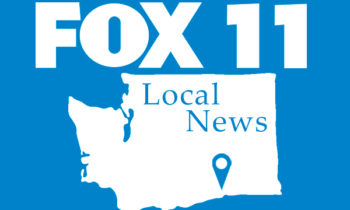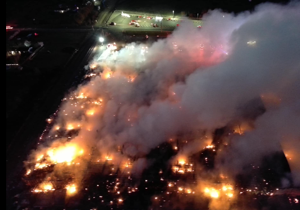RICHLAND, Wash. –
Pacific Northwest National Laboratory, NASA and WSU partnered up for an experiment that’s out of this world.
PNNL submitted their experiment to NASA to see if it was something NASA was interested in.
NASA responded back with a “yes” after going over their presentation.
A piece of Washington went to space last July.
“We’ve taken these bacterial species and we sent them up for a three-month stay at the International Space Station,” said Sr. scientist Ryan McClure.
PNNL collected soil samples from an area in Prosser that has not been disturbed in 50 years.
The samples were injected with eight different species of bacteria.
104 samples were taken to NASA.
Half of those samples went into space and the other half stayed on earth.
The scientists will compare the samples against each other to see what, if any differences there are in the samples.
“We really wanted to understand what are the differences in the microbial responses on earth versus an environment where there is no gravity,” said McClure.
Ryan McClure says the soil sample they collected has a powdery consistency, similar to the surface of the moon.
Monday those samples were returned to PNNL and a bunch of very excited scientists.
The scientists were all gathered outside of the PNNL building, anxiously awaiting the arrival of the soil that was aboard the space station.
Friday the samples were loaded up at the Kennedy Space Center and shipped across the country to Richland.
The samples were kept in a sub-freezing climate-controlled truck.
When the truck arrived McClure and the biomedical scientist Yuliya Farris each approached the truck and shook hands with the driver.
The samples were then very carefully loaded onto a cart and taken into the lab.
“I was very anxious to break open those boxes. It was like a second Christmas,” said McClure.
Each of the tubes holds 20 grams of soil.
The soil along with the bacteria was packed with chitin, a microbe chow, which is the key for the microbial community to survive.
“I was there to set them up and send them out into space. I watched the whole thing, the launch,” said Farris.
Farris was just as excited as McClure if not more.
Farris watched the Space-X launch in person last July and said it’s something she won’t forget.
“Even with a camera and you’re there to pick it up, it’s not the same just to be present and feeling the sound,” said Farris.
McClure said the scientists will start seeing the differences in the samples in four to six weeks.
The goal that PNNL is trying to accomplish is to see if the microbes in the soil will work in space to help with growing food and other nutrients in a zero-gravity environment.
“You’re presenting a great promotion for plants to grow, and as you know that’s the number one thing we are trying to do in here,” said Farris.
A lot of the groundwork for the soil experiment has been set up from a study of soil microbes by PNNL scientists.
This experiment has been funded by the Department of Energy.


